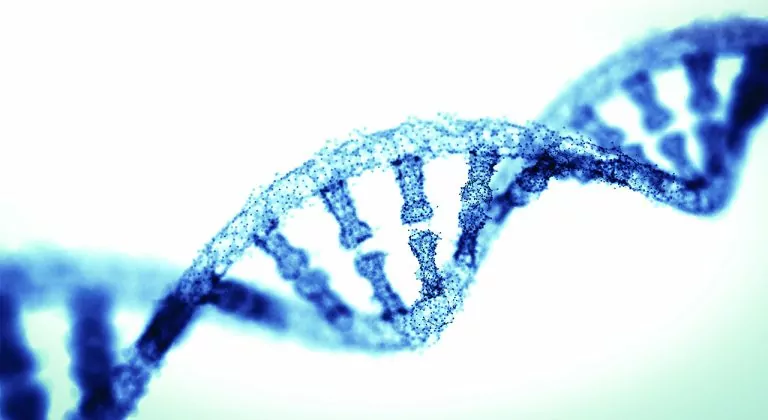What a difference 65 years makes. It was in April of 1953 that a one-page letter appeared in the journal Nature. Two young scientists believed that they had figured out the double helical structure of deoxyribonucleic acid or DNA. In their communication to the journal, these men remarked with masterful understatement that, “This structure has novel features which are of considerable biological interest.” This was indeed the case.
What these two men had achieved was to explain how the long DNA molecule in chromosomes stores information which can be accurately duplicated. This discovery has led directly to DNA fingerprinting, biotechnology, the sequencing of the human genome and evolutionary theories based on DNA sequences in various organisms. Although 65 years ago it was much too soon to foresee all these developments, nevertheless informed individuals understood that a significant milestone had been achieved.
Nobodies are somebody too
The big surprise in 1953 was not that the structure, and by implication the function, of DNA had been discovered, but rather who had done it. With established scientists like American Linus Pauling of Caltech in Pasadena, and British scientists Maurice Wilkins and Rosalind Franklin at King’s College, University of London, carrying out such research, it was expected that the problem would soon be solved. These scientists all had research funds, equipment and established names in science.
On the other hand, the British Francis Crick (1916-2004) and American James Watson (b. 1928) were basically nobodies in the scientific community. Crick for his part, his career having been interrupted by war service, was still a graduate student in 1953. Four years earlier, he had come to the Cambridge Medical Research Council Unit. His base of operations was the Cavendish physics lab where Nobel laureate Ernest Rutherford had achieved great things in the 1930s. Crick might be merely a graduate student, but he was nevertheless skilled in the methods of X-ray diffraction, so useful in searching for the structure of large organic molecules. Moreover he had devised a theoretical method for interpreting X-ray derived images of long chain molecules (polymers). This was a highly significant skill.
Rebels with a cause
The lead author of the April 1953 letter was James Watson. He had actually already earned his doctorate in bacterial genetics. Then in 1951 at age 23, he arrived at the Cavendish lab to carry out post-doctoral work on myoglobin, an oxygen storing protein found in muscles. Crick, for his part, had been assigned to carry out X-ray diffraction work on hemoglobin (the all important oxygen carrying molecule in red blood cells). Although they came from different backgrounds, Watson and Crick were alike in many ways. Both of them had, for example, read the 1944 book What is Life? by quantum physicist Erwin Schrodinger (1887-1961). In this work, far outside the author’s field of expertise, Schrodinger had speculated that there must be a code of some kind in cells that allows molecules to carry information.
Watson and Crick both suspected that DNA was such a molecule. They were fixated on the problem of DNA structure. It mattered little that they had been forbidden to work on this problem. By gentleman’s agreement between laboratories, the DNA problem had been allocated to the people at King’s College in London. Nevertheless nobody could forbid this irrepressible duo from bouncing ideas off each other, could they?
Just because you’re paranoid doesn’t mean you’re wrong
Meanwhile at King’s College, the most capable person carrying out research there in X-ray diffraction was Rosalind Franklin (1920-1958). She was a shy, very work oriented Jewish young lady who suspected that her male Anglo-Saxon fellow scientists were trying to steal the results of her research. In this suspicion she was entirely correct. Unfortunately as a result of her attitude, she had few people-handling skills and thus she found herself isolated and unprotected. She was one of two people allocated to research DNA structure. The other was Maurice Wilkins, who was much better known in the scientific community. He hardly ever spoke to his female colleague.
It was Rosalind Franklin who managed to overcome the difficulties of working with DNA. She designed a special X-ray camera for this work and protocols for handling the molecule. Soon enough, she began to produce X-ray images. What they meant however, she refused to speculate upon until her entire program had been carried out. It was X-ray images that would provide vital clues about DNA structure. She was quite sure about one thing; the images did not suggest a helical structure in DNA.
Two’s company, three helixes is a crowd
It is traditional for scientists involved in research to occasionally give lectures to update colleagues on what they are doing. Rosalind Franklin delivered such a seminar in November 1951. Her colleague Maurice Wilkins invited his friend James Watson from Cambridge. Francis Crick did not come because his interest in DNA was too well known. Watson listened carefully, but he did not bother to take notes. That might look too eager. Watson’s recall of what he had heard proved faulty however and progress on the issue was very slow. Then in January 1953, word came that American Linus Pauling was about to publish a proposed structure. This man sent a preprint to his son at Cambridge. The son showed it to friends Watson and Crick. They were relieved to see that Pauling had made a simple but significant error in the chemistry and was proposing a triple helix structure. They had a reprieve which might last a few weeks.
Two days later Watson visited Franklin. The exchange of views did not go well. Watson taunted her that she was inept at X-ray interpretation. He then encountered Wilkins who showed Watson the best image Franklin had ever taken. From it Watson was able to see clear indications of helical structure and even measurements of angles. Wilkins also showed Watson a Franklin research proposal which contained further crucial details. Based on these insights, Watson and Crick solved the DNA conundrum within four weeks, proposed a double helix, and the rest is history.
When they published, they failed to acknowledge any contribution of Rosalind Franklin. She died five years later, never having heard of her contribution to this story. In 1962 Crick, Watson and Wilkins were awarded the Nobel Prize in Physiology and Medicine. The achievement of Watson and Crick reveals how important theoretical analysis is to the solving of many scientific problems. However they could not have done it without the experimental foundation of Rosalind Franklin. Theory and empirical research go hand in hand.
Driven by an agenda
In the decades that have followed, both Watson and Crick enjoyed long careers. Interestingly, both attribute their success to their atheistic views. James Watson went on to a faculty position at Harvard University where he soon proved himself adept at fund raising and administration. Eventually he became director of the Human Genome Project.
Francis Crick also enjoyed a long career and in his later years turned his attention to the seemingly unrelated issue of human consciousness. In Crick’s mind, however, there was a connection between the human brain and the DNA helix. During an interview with Matt Ridley, Dr. Crick described the connection. Apparently his interest in science came entirely from his atheistic views. Because of his distaste for religion, Dr. Crick said, he set out to research the two main topics often cited as support for religion: namely the gulf between life and nonlife, and the phenomenon of consciousness. As a hardcore materialist, it was Crick’s objective to explain both these phenomena in chemical terms. His hope was to dispense with any excuse for attributing natural phenomena to the work of God. After all, as colleague James Watson once remarked “Every time you understand something, religion becomes less likely” (or so they would both like to believe).
A description isn’t an explanation
A little reflection on our part, however, will show that Watson and Crick had in no way explained the gulf between living cells and mere organic compounds. Indeed what they had achieved was to describe how information is stored in DNA but they had not explained how that information came to be stored in the DNA molecule in the first place.
Nevertheless, under the mistaken assumption that their explanation did away with the need for a Creator of living cells, Dr. Crick turned his attention to the problem of consciousness. He wrestled with the problem for more than twenty-five years, but still the solution eluded him. One might imagine that after all that time, he might concluded that his program has no hope of success – that he might even grow discouraged with his atheistic agenda. On the contrary, right up until his death, Dr. Crick remained as firmly committed to his position as ever.
Throughout his career, James Watson too has steadfastly declared his atheism. In an interview with editor John Rennie of Scientific American, Dr. Watson confided: “I never thought there was a spiritual basis for life; I was lucky to be brought up by a father who had no religious beliefs.” In another interview he suggested that one of the benefits of DNA research was to provide mankind with godlike powers. Thus he remarked:
“Only with the discovery of the double helix and the ensuing genetic revolution have we grounds for thinking that the powers held traditionally to be the exclusive property of the gods might one day be ours.”
When it was pointed out to him that his sentiments were a far cry from those of the founding Pilgrim fathers, he replied: “America isn’t what it was like when the Pilgrims came here. We’ve changed everything. We’ve never tried to respect the past, we’ve tried to improve on it….”
That’s his opinion at any rate.
No end to the wonders to explore
It is apparent that from the start, the objectives of Drs. Watson and Crick were atheistic in nature. They were bitterly opposed to religious faith of any sort. For example, Francis Crick resigned as a fellow of Churchill College, Cambridge when that college embarked on plans to build a chapel. He suggested alternatively that a brothel would be nice, a not too subtle put down of places of worship.
The ultimate objective of these two men then was to explain both life itself and consciousness in chemical terms which would completely exclude any supernatural element. Of course in neither instance have they succeeded. The mystery of life cannot be explained in chemical terms. It is indeed ironic that our understanding of DNA has led to a greater appreciation of the gulf between nonliving chemicals and the living cell. No spontaneous or natural process can ever explain how a code such as DNA came to be, or the astonishingly concentrated storage of its contained information. Instead of providing us with an explanation of how we could have come about without God, their discoveries have only help show that we are more “fearfully and wonderfully made” than was understood before.
Thus this objective of atheists Watson and Crick has been met with utter failure. In addition even Dr. Crick admitted that the search for an explanation for consciousness had been frustrating. No solution is in sight even after all those years of study.
Christians for their part, still celebrate the achievements of April 1953. The motives of Watson and Crick were all wrong, but the nature of their information does not depend on attitude whether good or bad.
A version of this article first appeared in the June 2003 issue of Reformed Perspective under the title “DNA and the atheists agenda.” Dr. Margaret Helder also writes for Creation Science Dialogue.














